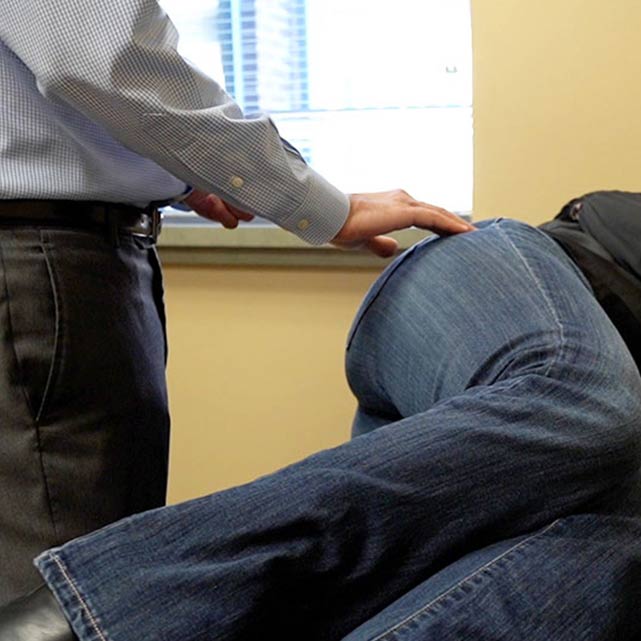Hip pain is one of the more common reasons people may find themselves seeking Orthopedic care.
The hip joint (femoroacetabular joint) is a large ball and socket joint with large muscular anatomy.
Because of this anatomy, the hip joint is very stable but has limited range of motion. The primary function is to support the weight of the body during static (standing) and dynamic (walking and running) postures.
In this post, we will discuss the more common diagnosis associated with hip pain. We will also review some at home treatments and discuss issues that might suggest obtaining an evaluation by an orthopedist.
The Hip Joint
The hip joint is the articulation between the ball (femoral head) and the socket (acetabulum) which connects the axial skeleton to the lower extremities. It functions in multiple planes of motion through a complex array of large muscular attachments. These motions are flexion/extension, abduction/adduction, internal/external rotation. There are multiple structures that make up the large hip joint.
- Bones: the femur (the long thigh bone) and the acetabulum (the pelvis).
- Cartilage: Each of these bones are partially covered with cartilage. Articular cartilage is made of collagen that forms an ultra smooth surface to allow our joints to move smoothly with limited friction.
- Ligaments: Ligaments are soft tissue structures composed of collagen that attach bone to bone and help stabilize joints. In the hip, the iliofemoral, pubofemoral,and ischiofemoral ligaments stabilize the femoroacetabular (ball-and-socket) articulation.
- Tendons: Tendons attach muscle to bone and also help stabilize the shoulder by working in muscular concert. The main tendons groups of the hip are the flexors, extensors, adductors, and abductors.
All of these structures are susceptible to injury or wear and tear over time. Among the most common injuries are fractures, labral injury, arthritis, and dislocations. Fractures include any break in the bone and are usually associated with a major trauma. Signs and symptoms of a fracture include pain, swelling, and limited use / stiffness.
Osteoarthritis
Osteoarthritis is one of most common non-traumatic causes of hip pain. This usually occurs due to age-related degeneration of the cartilage. Cartilage wear can range from mild to complete loss of cartilage (“bone on bone”).
Signs and symptoms of osteoarthritis involving the hip are groin pain, limited or decreasing range of motion, weakness, activity related pain, and radiating pain into the upper thigh or buttocks.
Wichita Hip Pain Treatment
Fortunately, many treatments are available for hip pain. In most cases, non-surgical treatment can provide significant relief from symptoms and in return of function. Rest, ice, and anti-inflammatory medications are excellent treatment options as initial management. If symptoms fail to improve with at home treatment, I would recommend scheduling an appointment with one of our qualified orthopedic doctors for further evaluation.

